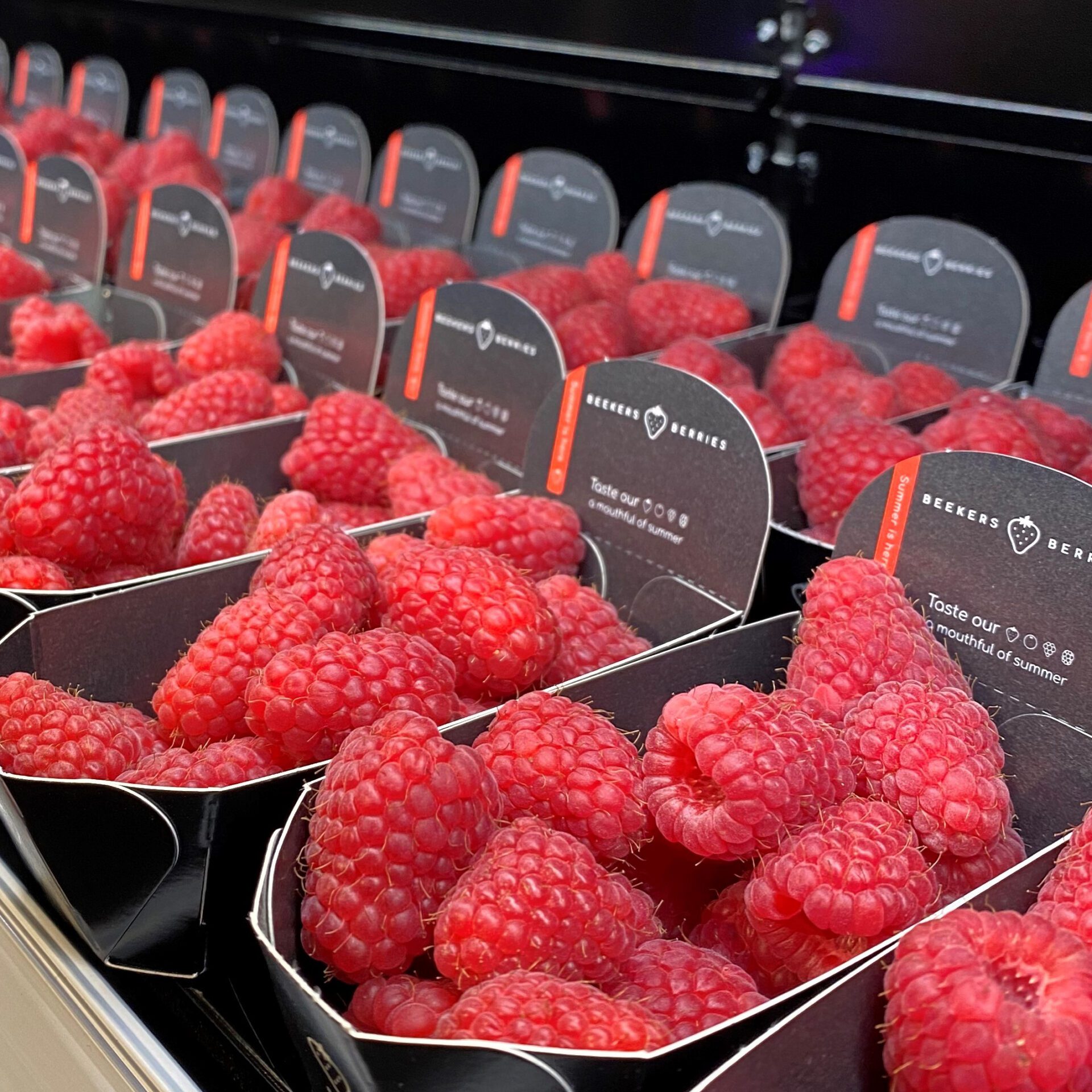Our history
Beekers Berries has now been in business for over 25 years. Join us on a journey back in time!

The beginning
After completing his education at HAS (Hogere Agrarische School), Wil Beekers embarked on his career at a breeding company in North Holland. His affinity for nature had always been present. “The urge to start my own business began to grow during my work in North Holland,” Wil reveals. Thus, in 1991, Wil and his wife Anita started their own cucumber company in Made, North Brabant. After four years of cucumber cultivation, they took a radical turn. In the autumn of 1995, Wil ventured into growing Elsanta strawberries in a greenhouse. “Although this was a leap into the unknown, I felt it was the right moment,” Wil continues. This step proved successful, and from that point on, the focus shifted entirely to strawberry cultivation.
Range expansion
At the beginning, there were only early and late-season strawberries. The season ran from the end of June to September. “From the start, we had close contact with our customers. At one point, they also asked for our product in the summer. Because I originally come from a greenhouse construction background, I expanded outdoor cultivation with the help of my experienced outdoor-cultivating brother-in-law,” explains Wil. In 1997, Wil took the next step by adding the Lambada strawberry to the collection. “1997 is etched in my memory. That was the year we first grew Lambada strawberries. This variety is an absolute queen among strawberries and offers growers the opportunity to stand out even more,” Wil adds. Lambada, known for its refined sweet taste and delicate texture, was a challenge to cultivate due to its demanding nature. Its production was lower than other varieties, and harvesting required a specific approach: each strawberry was carefully cut with its stem and placed in Beekers Berries containers.

Even more expansion
In the year 2000, raspberries and blackberries made their entrance. Beekers Berries’ loyal customers specifically asked for these berries, which led to their addition to the collection in 2003. With our own excellent varieties, Sapphire® and Midnight™, we can now offer the most flavourful raspberries and blackberries year-round. Blueberries were added to the Beekers Berries collection in 2006, completing the range of berries.

Specialties
However, Wil did not stop at this point. Together with Hans de Jongh, he began breeding, and in 2007, he added the first specialties to the offering. The Strasberry made its debut, with its distinctive appearance resembling a raspberry, combined with a sweet summer taste. In 2010, Hans developed the Pineberry, one of the world’s oldest strawberry varieties, also known as the pineapple strawberry. The variety was on the brink of extinction, but through dedicated research, cultivation, and harvesting, we managed to preserve and even enhance the Pineberry. This white strawberry has a deliciously refreshing sweet taste with a hint of pineapple.
With the success of the Strasberry and Pineberry, more specialties followed, including the Whiteberry, Bubbleberry, Pinkberry, and Yellowberry. “We continue to work on the development of our specialties, hoping for new varieties with beautiful colours and rich flavours,” says Wil. In 2019, redcurrants were added to our collection with their refreshing sweet taste, marking an important moment in the history of Beekers Berries. All of this has led to a wonderful selection of top-quality berries!
Passion and love
Breeding is a complex process, and when it comes to berries, especially strawberries, an additional layer of complexity is involved. This task requires deep knowledge and patience. Wil Beekers explains, “Strawberries are octoploids, a technical term meaning that crosses occur in a genetic environment with highly unpredictable outcomes.” This means that a breeder must work with numerous offspring to discover the right one. The right plant can sometimes be hidden among 2,000 to 10,000 plants. A true quest! “This not only makes it challenging but also requires a lot of time and financial investment. Although the likelihood of success is small, all of this adds an extra layer of satisfaction when you find a new variety after many years. Breeding berries is indeed an expensive endeavour,” Wil laughs. About a year after crossing, around 25 new plants come from that cross. These are thoroughly tested, and if they show positive results, they are further propagated. Therefore, it’s a process of multiple years before there is enough material to bring to the market.